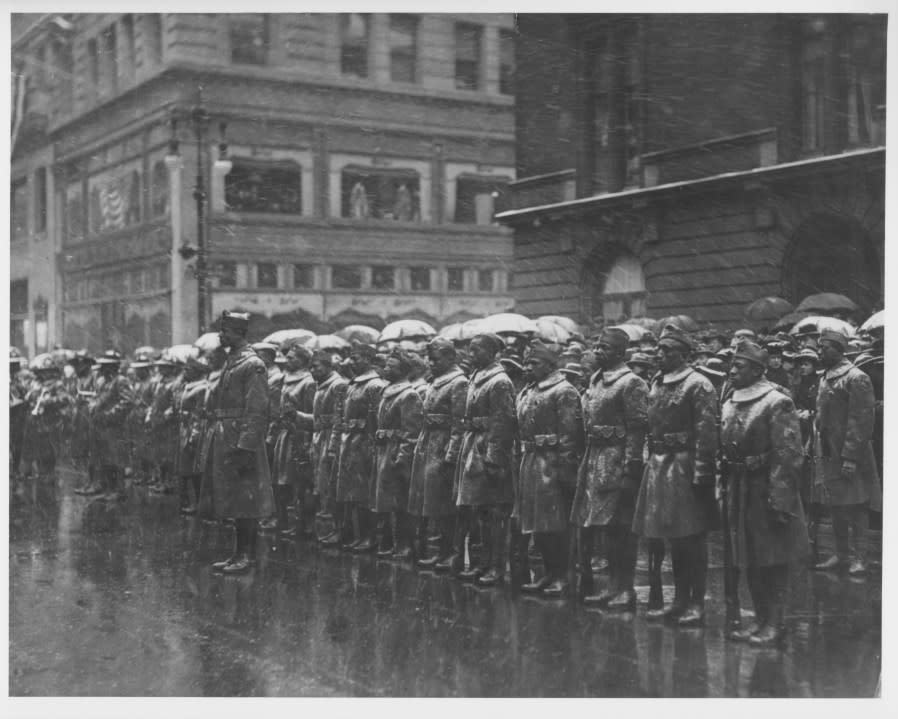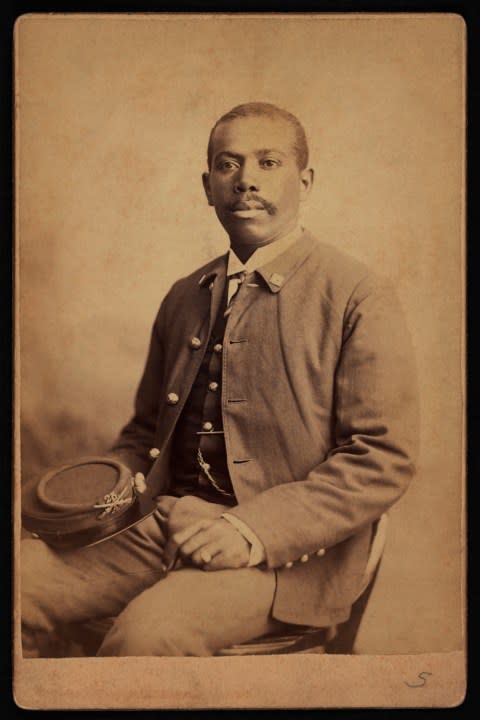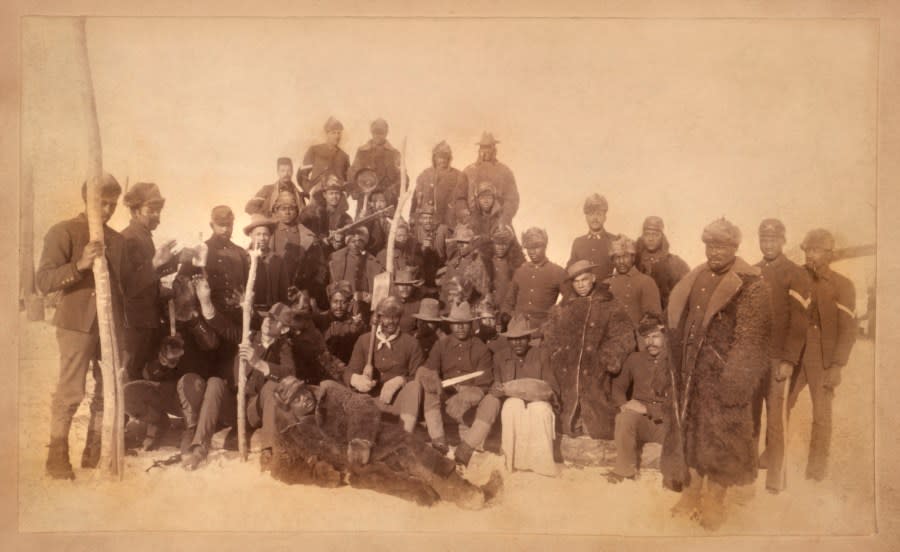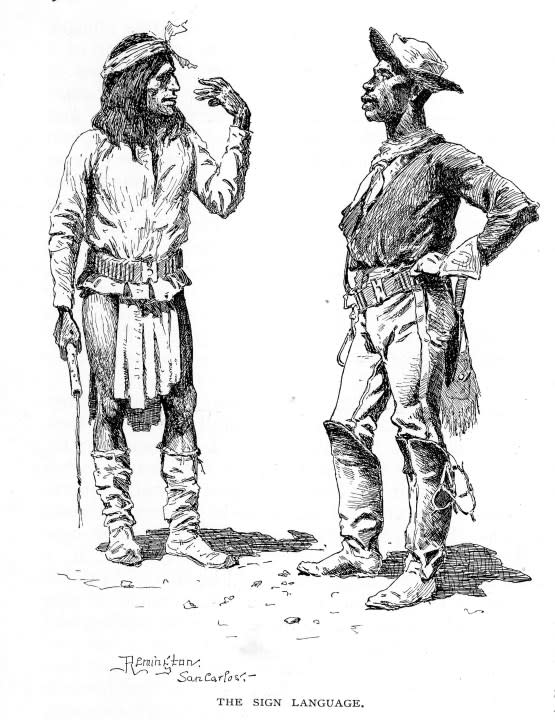The Buffalo Soldier Regiments of New Orleans

NEW ORLEANS (WGNO) — From Crispus Attucks and onward, Black Americans’ involvement with war efforts has a long history. The French and Spanish both used Black infantry. Enslaved Africans would fight in exchange for their freedom.
Under Spanish Governor of Louisiana, Bernardo de Gálvez, Spain would use Black infantry units in the American Revolution, to help a burgeoning United States of America fight against the British.
Louisiana Native Guard would fight in the Civil War. In 1886, the United States Congress established six African American military units, which would later be called the Buffalo Soldiers, after the Civil War to help with the reconstruction effort and the country’s push towards the Westward Expansion.
WGNO’s Honoring Black History Special: Sharing our stories from Havana, Cuba
Rhett Breerwood is the Louisiana National Guard Historian and says, “The 9th and the 25th regiments of the Buffalo Soldiers were both from New Orleans. Half of the Buffalo Soldiers nationwide came from New Orleans. Both of these regiments served with distinction. The 9th Cavalry served alongside Teddy Roosevelt’s Rough Riders unit and he gave them great acclaim.”
The 25th Infantry Regiment of the Buffalo Soldiers was headquartered where the Jackson’s Barracks National Guard is today. In New Orleans, the Historic St. James African Methodist Episcopal Church at 222 North Roman Street, was a space where both the 9th and 25th Buffalo Soldiers units, as well as other Black organizations, were recruited.
Today, the 9th Cavalry 25th Infantry Buffalo Soldiers exists as an organization, whose mission is to preserve, document history, and raise awareness of the Buffalo Soldiers.
Richard Keller is a member of the 9th Cavalry 25th Infantry Buffalo Soldiers group and says, “I’m dressed in my father’s clothes. My father was very instrumental in getting the proclamation that July 28, would always be Buffalo Soldier Day in the city of New Orleans. People call this Black history, but this is American history. We should be proud of it because it’s ours.”
African American ‘Buffalo Soldiers’, of the 92nd Infantry Division, in a victory parade on 5th Avenue following World War One, New York City, USA, circa 1918-1919. (Photo by European/FPG/Getty Images) Full-length Portrait of African American Soldier, 9th Cavalry, Company D, Sharpshooter Collar Insignia, by CC McBride, William A Gladstone Collection of African American Photographs, 1880s. (Photo by: Glasshouse Vintage/Universal History Archive/Universal Images Group via Getty Images) Buffalo Soldier, 25th Infantry, Seated Portrait in Uniform Holding Hat, by Orlando Scott Goff, William A Gladstone Collection of African American Photographs, 1880s. (Photo by: Glasshouse Vintage/Universal History Archive/Universal Images Group via Getty Images) Buffalo Soldiers of the 25th Infantry, Some Wearing Buffalo Robes, Fort Keogh, Montana, USA, Christopher Barthelmess, William A Gladstone Collection of African American Photographs, 1890. (Photo by: Glasshouse Vintage/Universal History Archive/Universal Images Group via Getty Images) Illustration depicting an African American soldier of the 10th Cavalry, one of the original Buffalo Soldier regiments, speaking with a Native American through sign language, Arizona, 1888. The artist Fredric Remington toured with the regiment and drew this sketch for The Century Magazine, which published it in 1889. (Photo by Interim Archives/Getty Images)
Keller’s father was Lawrence F. Keller, the late Vice President of the 9th Calvary and 25th Infantry Buffalo Soldiers of Louisiana.
The Buffalo Soldier Infantry in the United States survived until around World War Two. However, the Buffalo Soldier legacy continues today.
John Anderson is the President of the 9th Cavalry 25th Infantry Buffalo Soldiers and is very well-versed in research.
“They served their country, which they called their country! They fought gallantly in every war and skirmish they were in,” explains Anderson.
The Buffalo Soldiers’ name comes from the 10th Cavalry of the Buffalo Soldiers. It was a name given to them, but Native American Adversaries, who felt the Buffalo Soldiers were as fierce as the buffalo in battle.
The term “Buffalo Soldier” would eventually be adopted by many different African American military units, regardless of military association or war. Over the years, as the Buffalo Soldiers made their way into legend, they also made their way into popular culture and song; like in Bob Marley’s 1983 song.
They exist as a reminder of the many military contributions that Blacks have made in helping to cultivate the United States of America.
For the latest news, weather, sports, and streaming video, head to PIX11.





